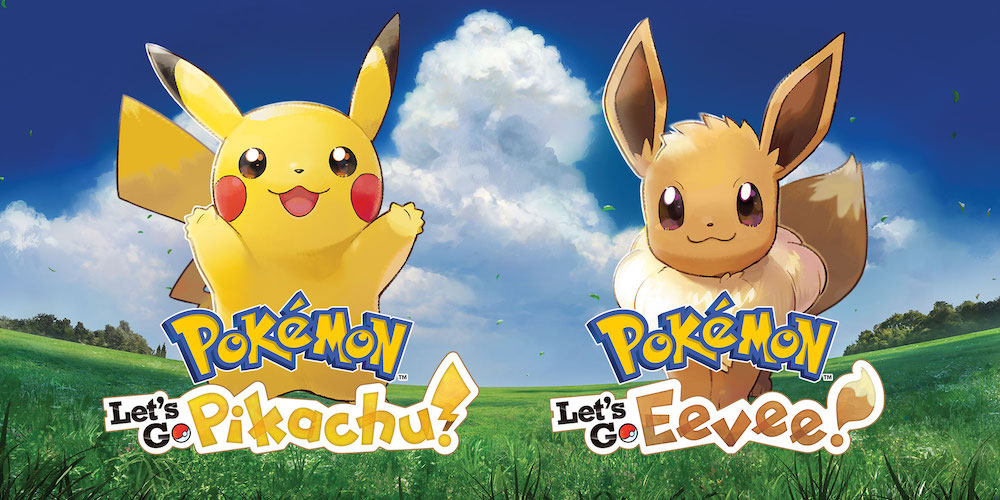
One of my earliest gaming memories is receiving a copy of Pokémon Blue for Christmas at a very young age, and mainly because I couldn’t work out how to leave the house, not deducing that the little carpet indicated an exit. Completely allured by the creative monster design and deep combat system, I’ve since played every core Pokémon game over the years usually only avoiding spin-offs and re-releases. That said, the charm of Game Freak’s new “Pokémon Let’s Go,” with its recreation of the original region of Kanto, was a spin-off I couldn’t resist trying out.
I think that’s a key point to drive home up-front: the term “spin-off” is quite apt for Let’s Go, as it makes some fundamental changes outside of the obvious new catching method. EVs have been replaced with a new system based on candy, the core design focus now emphasizes capture instead of training, and random encounters have been removed entirely. Despite this, it still manages to capture the heart of the Pokémon franchise: a journey with your beloved team of Pokémon, to be the very best.
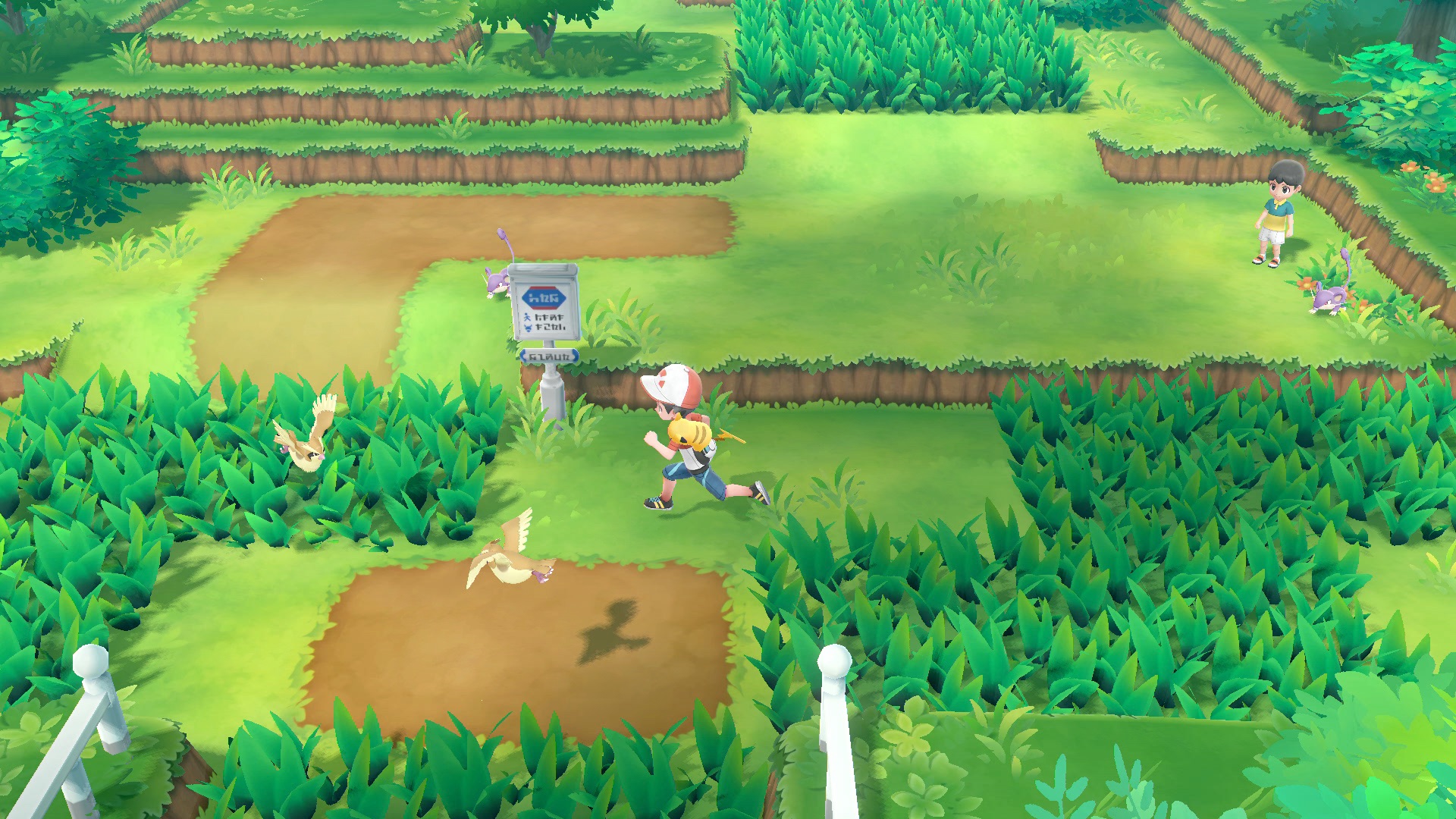
The primary way you’ll be pulled into this world is by the fantastic visuals, which are easily the strongest for a Pokémon game thus far. From the look of the Pokémon and the player character to the energetic animations in both combat and the overworld, the aesthetics of the game are designed to please and encourage you to see more. We may not have moved on from the classic top-down view, but they’ve managed to pull what they can out of that limitation and make it look good, with a little sprinkling of personal customization for good score.
A significant point of contention and perhaps the most noticable difference to Let’s Go is the new catching system, which focuses on emulating the “Pokémon GO” experience. Wild Pokémon encounters are resolved solely with berries and Pokéballs, without any actual combat taking place. Along with random encounters being replaced with visible models you can choose to fight or avoid, each wild encounter is streamlined making them rapid and fluid especially while grinding for Shinies. However, this also removes any essence of threat, turning the frightening depths of Dark Cave or Victory Road into a nice place for a peaceful stroll.

Where I don’t have a direct issue with the changed focus to a catching-centric game, I do have some concerns about the control scheme they’ve implemented around it. The default control method is motion-based: you mimic the act of throwing a Pokéball, aiming for the moving circle in much the same way as Pokémon GO. I found this motion to be semi-reliable with a Joy-Con, but also exhausting when hoping to sit down for a relaxing bit of grinding. The docked mode of play offers no alternative control scheme than this; that is, if you wish to play Let’s Go on your TV, you need to accept mandatory motion controls using a single Joy-Con or the Pokéball Plus.
While we’re on the topic, the Pokéball Plus has a lot of merits as a cute collector’s item and a fun way to boost the thematic feel of catching Pokémon, but suffers in multiple ways as a potential controller for the game. As a sphere, orientation is a problem when using the analogue stick; after doing the capture motion, I’d have to reposition the ball in my hand to make sure that up was indeed up. With only two buttons, translating to the normal ‘A’ and ‘B’ functions, many features are completely inaccesible or much harder to use. For example, if you wish to rearrange your Pokémon’s moveset, each movement requires a firm shake of the controller. Similarly, if you were hoping to view the specifics of your moves in battle, you’re completely out of luck.
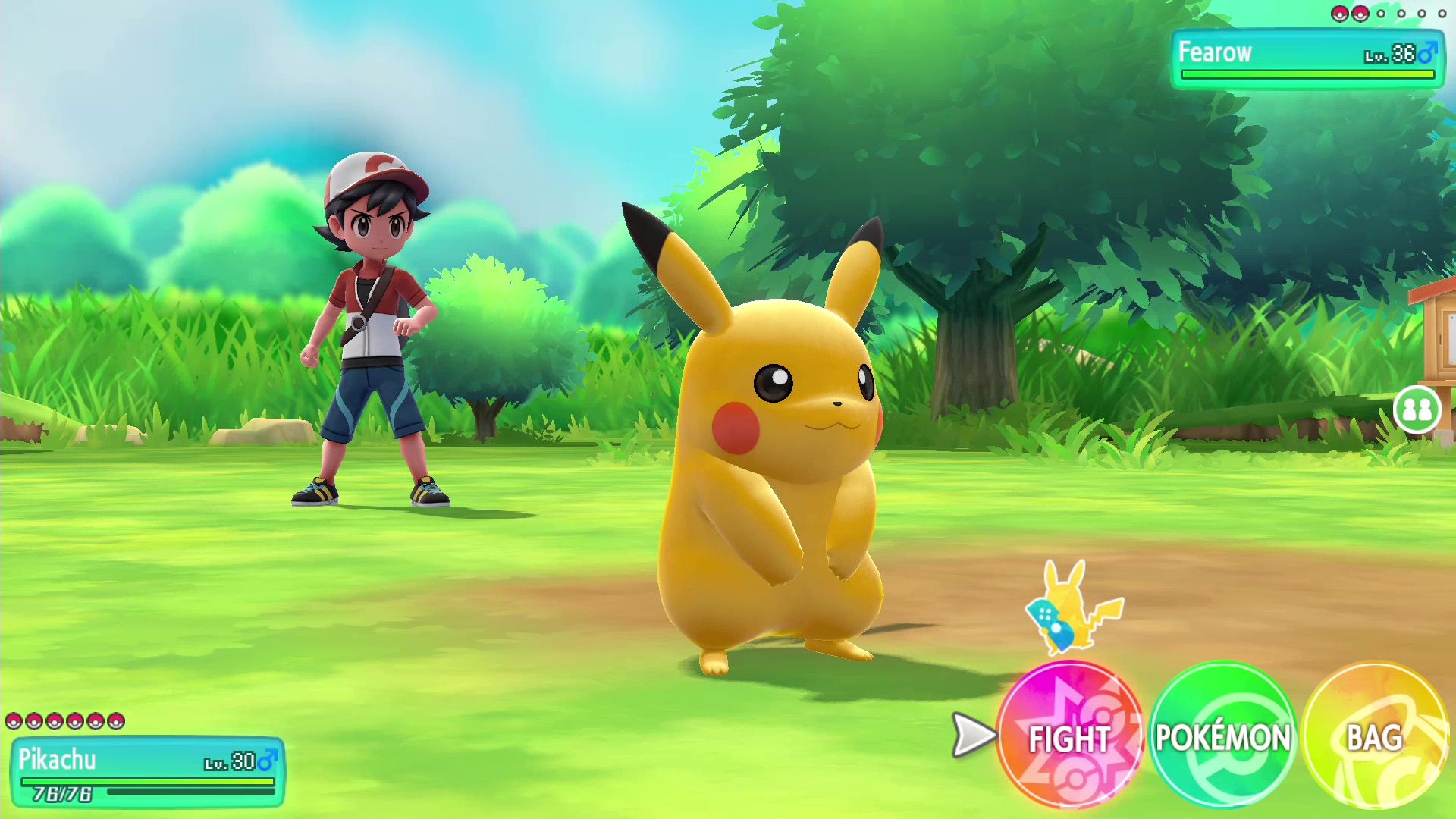
With this focus on motion controls and the much more innocent overworld, this is perhaps the most approachable form of the series currently available. While this has attracted much interest on a global scale, fans and RPG gamers will probably find the lack of depth concerning. Pokémon has long had not-so-hidden complexities, in the form of EV-training and breeding for Nature, both of which are omitted. With specific regard to EV-training, this has been replaced with candy, rewarded for high ‘Catch Combos,’ which can provide seemingly unlimited stat boosts to your team.
This brings me to my main concern for the game from a fundamental design perspective: due to the absurd boosts you can obtain for your team, the late game and post-game can both become a dull steamroll. From the fourth gym onwards, I was able to take out any opponents with my Ninetales’ Flamethrower or my Graveller’s Earthquake, turning the entire second half of my journey into a repetitive slog. Again, where this may appeal to those new to the series for a bit of fun, longtime fans will find the simplicity a challenge to accept.
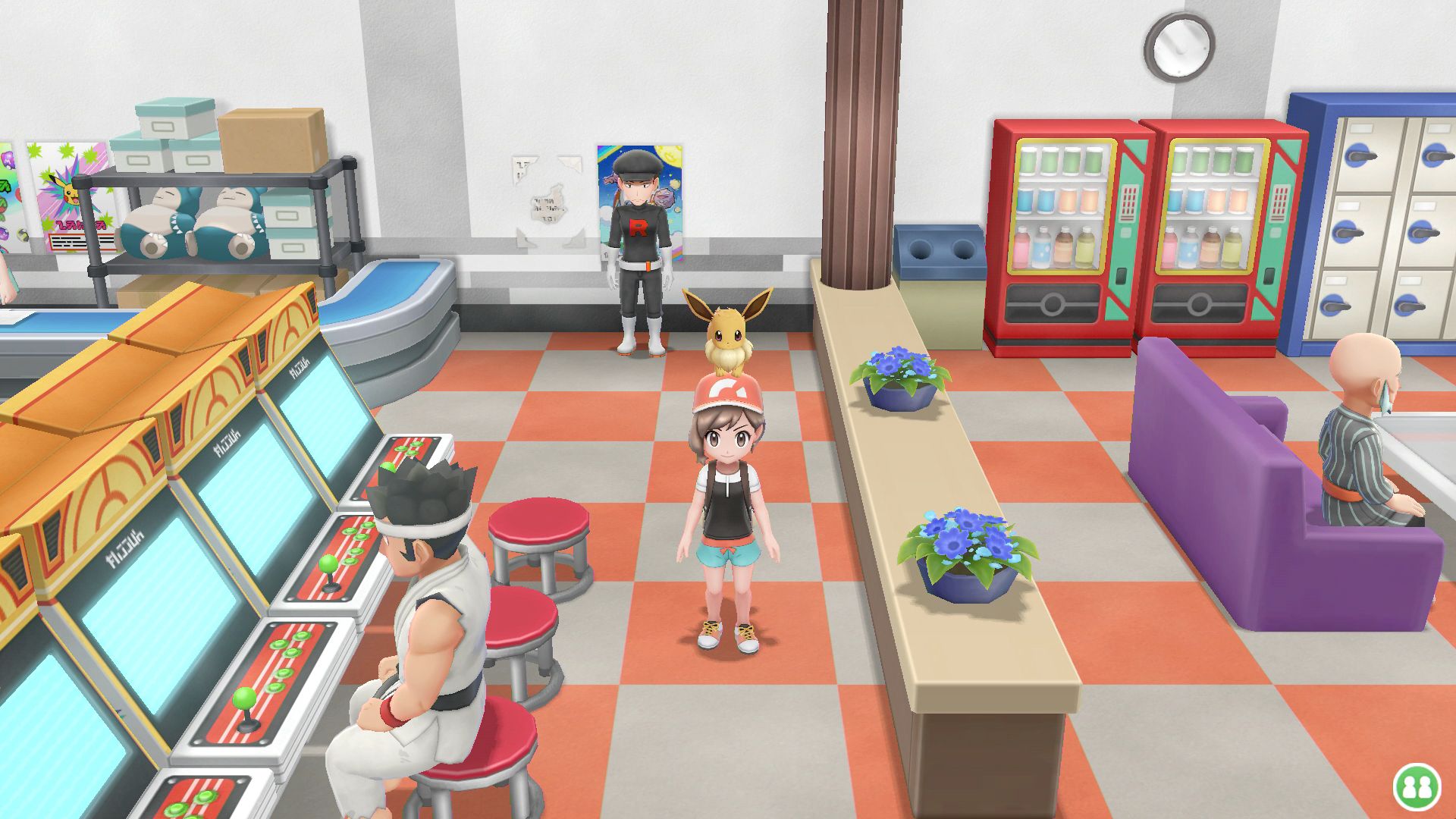
That said, it’s not all doom and gloom for the new systems with some much appreciated new conveniences. Having your Pokémon Box be a portable system you take with you is a delight that I’d love to see carried into the new core game next year. The removal of HMs, first put into place in the last generation, has been thankfully maintained here and your partner Pokémon replaces the role of both your bike and dowsing rod. Finally, there’s a fun extra co-operative mode wherein an additional player can join in on the action, helping fight or capture; if you’re already signed on for the simplicity of the game for the sake of a child or non-gamer, you’ll likely find this a nice way to lend them an extra helping hand.
The partner Pokémon system was a mixed bag for me. Your main partner, Pikachu or Eevee depending on which edition you go for, felt like a lively and dependable friend. You celebrate wins, share frustrations, and all cutscenes tend to centre around their curiosity and eagerness. On the other hand, your secondary partner Pokémon, which can be any you choose, either felt like a tool or a mindless drone depending on the circumstances. The ones who follow behind you will only ever beeline to you, failing to path-find around obstacles, while the ones who stay in front or at your feet will frequently be picked up by your attempts to interact with the world; trying to pick up an item or talk to someone is much harder with your friendly Pokémon in your face.

Should you finish your journey and still be eager to keep going, Game Freak have included plenty of post-game content in the form of the Master Trainers, a mob of trainers who each have uniquely trained one particular Pokémon and expect you to do battle with them on in a one-on-one same-Pokémon showdown. While I didn’t get far into this mode, I would love to see something like this return as it’s an effortless yet effective way to generate a large amount of post-game content that still provides a unique challenge: the training of otherwise unused Pokémon. As a series with numerous monsters of which only a small amount are normally combat-viable, this kind of mechanic is exactly what the series needs.
Finally, I’d like to address the most significant oversight I can see: the handling of the handheld mode. Game Freak had made a point to say that the recommended experience for Let’s Go was TV-based play, and they weren’t wrong. Handheld suffers in two significant ways: the frame-rate drips frequently and your primary partner Pokémon no longer interacts with you and can’t perform its special mid-fight abilities. Oddly, the one benefit of this mode is that it allows you to play using no motion controls, but there’s no way to access this control scheme on a TV-based session, for reasons I can’t understand.
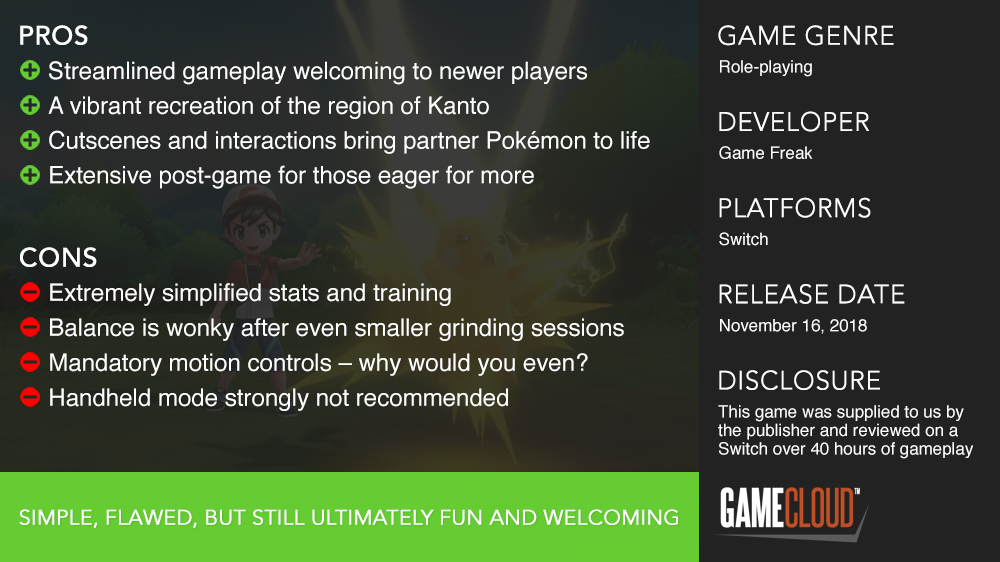
Pokémon Let’s Go has been designed with some clear key phrases in mind: “streamlined gameplay,” “capture focused,” and “primarily TV-based.” It nails these points precisely but takes little time to consider any needs outside of them. What this has resulted in is a game that I feel would be an excellent point for a casual gamer to enter into the series and have a blast, or to introduce a young gamer into the world of Pokémon. However, it offers the more experienced gamer little more than some nostalgia, and such gamers may be better off holding on for a hopefully more challenging experience with the new core game next year.











